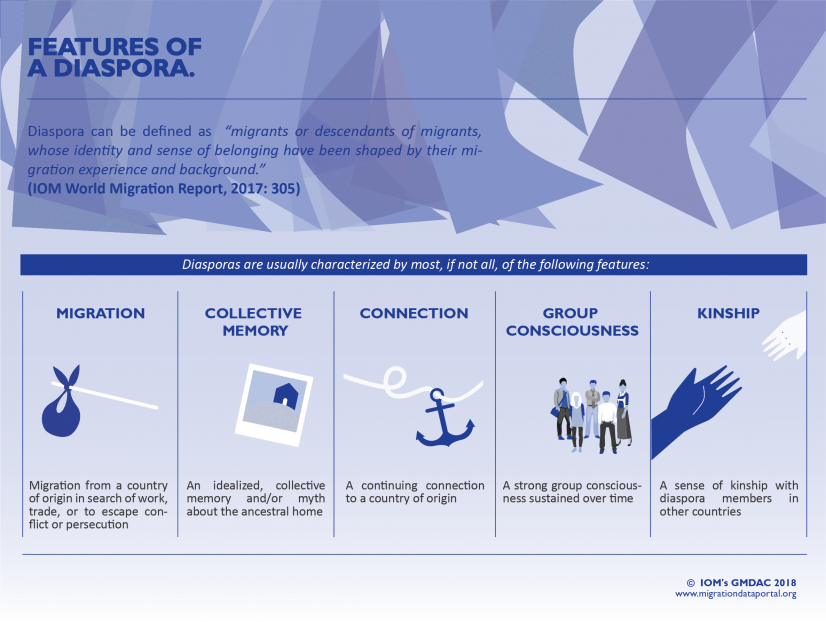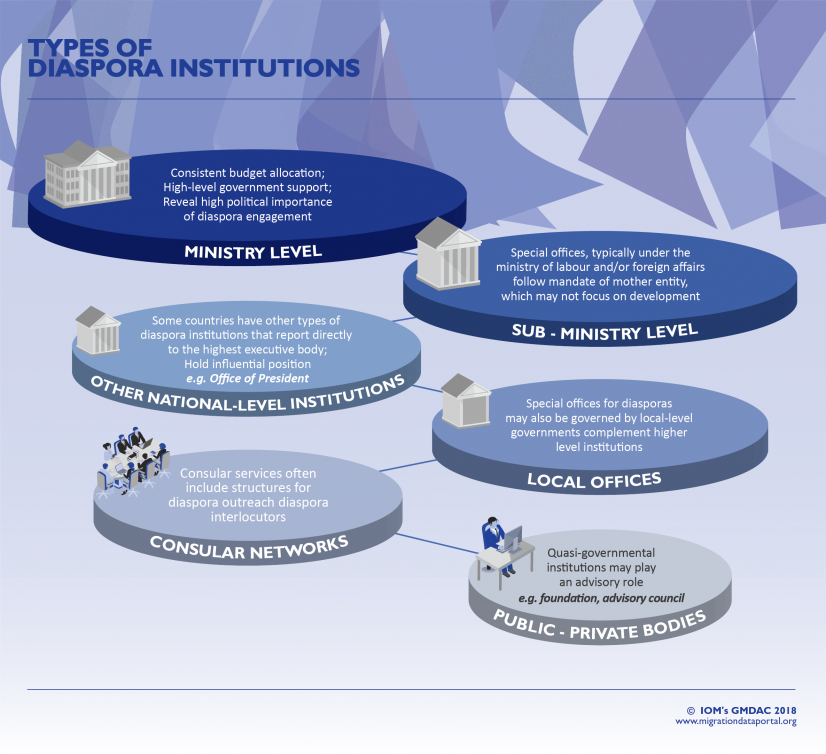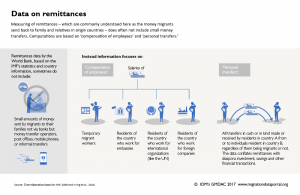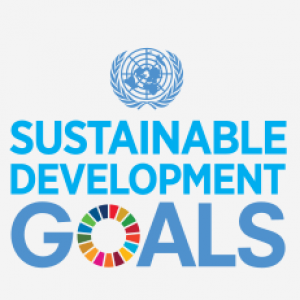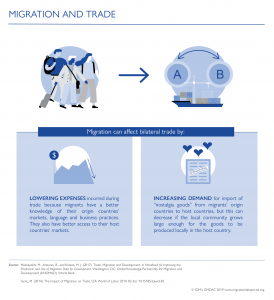Diasporas
Diasporas, sometimes referred to as expatriates or transnational communities, play an important role in leveraging migration’s benefits for development. Measuring issues relating to diaspora groups is challenging, as there is no agreed-upon definition of "diasporas". Data on migrant stocks can act as a proxy for diaspora populations, and remittance data are also closely linked to the study of diasporas. Since the 1990s, many states have established wide-ranging programmes aimed at promoting relations with diasporas. However, differences in definitions and a lack of robust monitoring and evaluation mean that comparative analysis of these policies is difficult.
Back to top
Definition
The term "diasporas" has no set definition, and its meaning has changed significantly over time, which makes it very difficult to measure. IOM defines diasporas as “migrants or descendants of migrants, whose identity and sense of belonging have been shaped by their migration experience and background.” (IOM Glossary on Migration, 2019) While the term was originally used to describe the forced displacement of certain peoples, "diasporas" is now generally used to describe those who identify with a "homeland", but live outside of it. Definitions of "diasporas" also include not only first-generation emigrants, but also foreign-born children of these individuals, as long as they maintain some link to their parent’s home country. These links – whether cultural, linguistic, historical, religious or affective – are what distinguish diaspora groups from other communities.
Normally, diasporas are characterized by most, if not all, of the following features:
- Migration, which may be forced or voluntary, from a country of origin in search of work, trade, or to escape conflict or persecution;
- An idealized, collective memory and/or myth about the ancestral home;
- A continuing connection to a country of origin;
- A strong group consciousness sustained over time; and'
- A sense of kindship with diaspora members in other countries. (Adapted from Cohen, 2008).
The terms "brain drain", "brain gain", "brain bank" and "brain circulation" are often mentioned in the context of understanding and studying diasporas. IOM defines "brain drain" as the “emigration of trained and talented individuals from the country of origin to another country resulting in a depletion of skills/resources in the former.” "Brain gain", also called "reverse brain drain" refers to the benefits gained from the immigration of skilled individuals into a country. It has long been understood that when highly skilled or educated individuals emigrate en masse, it can pose problems for their country of origin.
However, in most circumstances the continued involvement of diaspora groups in their countries of origin can provide a solution to brain drain. Since the late 1990s, the positive effects of emigration have given rise to new terms such as "brain circulation" and "brain bank". "Brain circulation" refers to those emigrants who transfer new skills and knowledge invaluable for development to their home country. Even when skilled emigrants do not return to their countries of origin, they often provide the skilled professionals that remained behind with access to the valuable knowledge learned abroad, referred to as "brain bank." (Kapur, 2001).
Members of diasporas may engage in development in their home countries directly or indirectly. Tinajero (2013) identifies five different levels of diasporas involvement in development, ranked here from lowest participation to highest:
- Receiving information: Members of diasporas passively receive information on development- related initiatives in their home countries.
- Passive information gathering: Members of diasporas provide information to interested parties, often governments in their home countries.
- Consultation: Development actors, including governments, consult members of diasporas to inform policy or practice.
- Collaboration: Members of diasporas share responsibilities, either by delegating tasks to other actors, or by jointly designing and/or implementing development interventions.
- Self-mobilization: Members of diasporas retain full ownership and responsibility for development initiatives.
Agunias and Newland (2013) provide a helpful overview of countries which have different types of governmental and quasi-governmental diasporas institutions, as well as those which maintain consular networks (see pages 72-90). IOM classifies diasporas institutions based on their position within the government hierarchy, as this often reflects their level of influence within and outside of the government:
Recent trends
The changes in definitions of the term “diasporas” are also linked to the so-called “diasporas turn” in policy discourse and practice. Though diasporas-related policies and institutions have existed since the 1800s, an increasing number of governments and international organizations have implemented policies intended to incorporate diaspora populations in a variety of domains since the 1990s (Gamlen, 2014). This stems from a growing recognition that diaspora communities are important development actors, and can improve social, economic and cultural linkages between their home and host countries.
Diasporas-outreach policies include not just traditional consular services for nationals abroad, but also programmes within domestic ministries focusing on, for example, health, welfare, labour, education, economy, culture, or religion. Several countries, including the Philippines, Bangladesh, Canada and Israel, have entire ministries dedicated exclusively to diasporas relations.
While diasporas outreach programmes are often aimed at using remittance money for development, governments increasingly facilitate links in other ways. Many states have made it easier to preserve or access citizenship for diaspora members, or have developed new forms of membership. (Agunias and Newland, 2012)
For example, individuals that can provide evidence of links to their countries of origin can apply for ethnic origin cards in India, Turkey, Croatia and others states. Some states, such as Mexico, have also redesigned structures relating to electoral representation in order to be more inclusive of nationals abroad. In origin states where citizens living abroad are not allowed to vote, political associations may be developed as alternative forms of representations.
Data sources
Data on diaspora populations are difficult to collect, as emigrants are not automatically members of diasporas, and second- and third-generation descendants of migrants may also be considered or consider themselves to be part of a diasporas group. Generally, there is far more information available on diasporas than there are data. Information is qualitatively different from data, with information suggesting a non-systematic approach. Currently there are no attempts to measure global diaspora populations per se, but the data sources below can act as a proxy for diasporas that maintain links to a certain country of origin. Few data are available on diaspora groups that are linked by a common religion or ethnicity.
Data on emigrant stocks are one such proxy. Many countries report stock data to organizations such as UN DESA, the Organization for Economic Cooperation and Development (OECD) and the Statistical Body of the European Union (EUROSTAT). Some countries with high emigration rates include questions on emigration in their national censuses, which often include questions on emigrant destinations, demographic characteristics, education level, and motivation for migration, among others. However, emigrant stock data give an incomplete picture of diaspora populations, for the reasons listed in the above paragraph, and as global migration figures do not always differentiate between short- and long-term migrants.
Data on issues relating to diasporas can also inform our knowledge of diasporas. "Brain drain" and related concepts can be measured through data on the education level of emigrants. For example, the OECD measures the education level among migrants in OECD countries and non-OECD destination countries. Similarly, data on migrant remittances capture just one of many ways in which diasporas influence their home and host countries. Current data on diaspora institutions - defined as "formal state offices devoted to matters concerning emigrants and their descendants abroad" - are available in Alan Gamlen´s publication.
Additionally, operational data can inform our understanding of diaspora groups. For example, IOM’s Migration for Development in Africa (MIDA) programme is a capacity-building programme that promotes the transfer of skills, knowledge, and other resources of African emigrants to their home countries. IOM’s implementation of Return of Qualified Nationals (RQN) and Temporary Return of Qualified Nationals (TRQN) programmes has led to more than 4,000 assignments of diaspora worldwide deploying their skills in sectors such as education, health and technology. IOM has also conducted more than 120 surveys assessing diaspora communities, mostly in OECD member states and European nations. Examples include studies on diaspora groups from Zambia, Angola, Morocco and Moldova. Data from similar programmes, such as the UNDP’s Transfer of Knowledge through Expatriate Nationals (TOKTEN) programme, have been used to assess the effectiveness of diasporas outreach and training programmes in certain countries, such as Sudan and Syria.
Back to topData strengths & limitations
More information is available on diaspora-related topics than there are data. The strengths and weaknesses of proxy data sources are available on the stocks and remittances pages. Studies on diaspora populations conducted by origin countries are often limited by the human and financial costs of conducting large-scale surveys in far-flung locations. Several States, such as Nigeria and St. Vincent and the Grenadines, have databases on diaspora populations that are based on voluntary online registrations, while others collect data based on emigration records. This forces governments of sending countries to rely on data collected by destination countries on, for example, a resident’s birth country or ancestry. While some destination countries, such as Germany, have conducted studies looking at many aspects of the members of diasporas living within their borders, data on diasporas are far from comprehensive.
Currently, research on diasporas-related institutions consists mostly of single-country case studies, with limited comparative analysis and even less quantitative research. This means that the determinants that lead to the development of diasporas outreach policies, as well as any potential best practices in diasporas-related policies, can be further explored.
The Oxford Diasporas Programme, which ended in 2015, was one of the few comparative analyses of diasporas outreach programmes, and also included several other projects measuring the social, economic, political, and cultural impact of diasporas across the world.
As discussed above, data on emigrant stocks can serve as a rough proxy for diaspora populations. However, data on emigrants are difficult to collect, as evidenced by the fact that the total number of immigrants recorded worldwide is higher than the number of emigrants reported. Unlike immigrant stocks, it is difficult to capture the number of emigrants through national census-taking. As many countries do not collect data on potential emigrants as they pass through border controls, it is likely that data on emigrant stocks are lower bounds. (UNSTATS, 2017)
An additional issue is that research on diasporas-related issues focuses overwhelmingly on South-North migration. The lack of attention given to South-South migration means that conceptions of diasporas engagement and ‘brain drain’ focus on highly skilled and -educated professionals from the global South that have migrated to the Northern hemisphere. This is especially problematic considering that international migrants in the global South outnumber those in the North. The benefits of diasporas engagement are often viewed as a one-way flow of assets from developed countries in the North to the less-developed South, which clearly does not fit the reality of South-South migration. Though many assume that diasporas engagement compensates for brain drain, there is not enough evidence to establish if this holds true for the global South.
Further reading
| Cohen, R. | |
| 2008 | Global Diasporas: An introduction. Second edition, Routledge, New York. |
| Gamlen, A. | |
| 2019 | Human Geopolitics. States, Emigrants, and the Rise of Diaspora Institutions. Oxford University Press, Oxford. |
| Sigona, N., A. Gamlen, G. Liberatore, H. Kringelbach (eds.) | |
| 2014 | Diasporas Reimagined: Spaces, Practices and Belonging. Oxford Diasporas Programme, Oxford. |
| Agunias, D. and K. Newland | |
| 2012 | Developing a Road Map for Engaging Diasporas in Development: A Handbook for Policymakers and Practitioners in Home and Host Countries. International Organization for Migration, Geneva and Migration Policy Institute, Washington, DC. |
| McAuliffe, M. and M. Ruhs (eds) | |
| 2017 | “Appendix B. Diaspora” in World Migration Report 2018. International Organization for Migration, Geneva. |
| Collyer, M. (ed.) | |
|
2013 |
Emigration Nations: Policies and Ideologies of Emigrant Engagement. Palgrave Macmillan, London. |
| Ragazzi, F. | |
| 2014 | A comparative analysis of diaspora policies. Political Geography, 41:74-89. |
| Chikanda, A. and J. Crush | |
| 2014 | Diasporas of the South. In A New Perspective on Human Mobility in the South (R. Anich, J. Crush, S. Melde, J. Oucho, eds.). International Organization for Migration, Geneva. |
| Kapur, D. | |
| 2001 | Diasporas and technology transfer. Journal of Human Development, 2(2):265-286. |
| UN Department of Economic and Social Affairs Statistics Division (UNSTATS) | |
| 2017 | Chapter VI: The challenges of measuring emigration. In Handbook on Measuring International Migration through Population Censuses. United Nations, New York. |
| OECD | |
| 2015 | Connecting with Emigrants: A Global Profile of Diasporas 2015. OECD Publishing, Paris. |
| Oxford Diasporas Programme publications are available online. | |
Back to top
